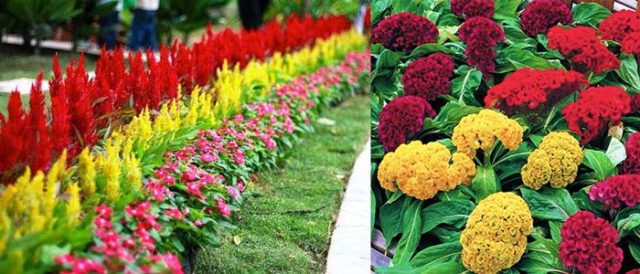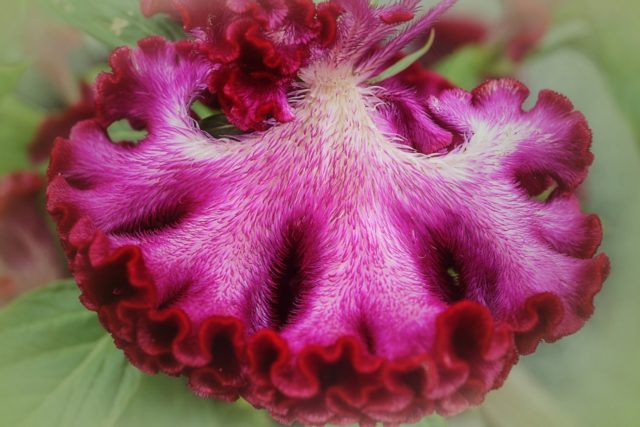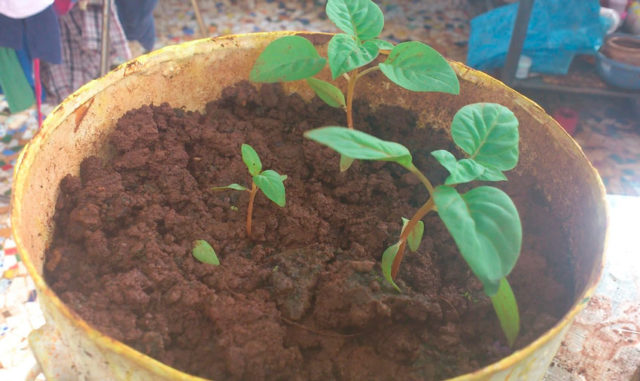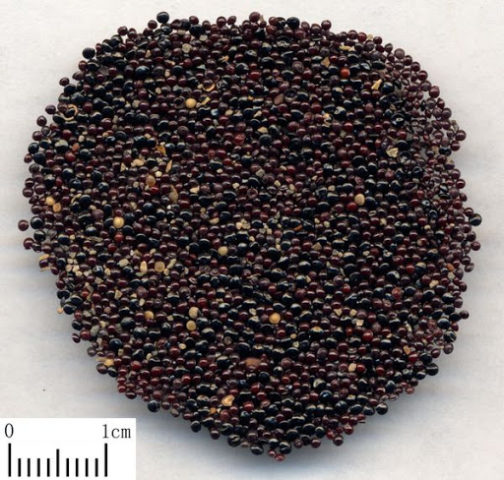Content
Celosia is a spectacular plant of the Amaranth family, striking in its appearance. Its incredibly bright, luxurious flowers resemble panicles, rooster crests or bird feathers. They are the same bright color and soft to the touch. From Greek, the name of the flower "Celosia" is translated as "burning, fiery, flaming." Growing seedlings of cellosis from seeds at home is somewhat troublesome, but the result is worth it. Flowers, glowing with various colors, will decorate any flower bed or flower garden with dignity.

The genus of celosia has about 60 different varieties, each of which has its own advantages and exclusive appearance.
The nuances of growing seedlings of celosia
Growing cellosis from seeds at home is the most convenient and effective way of propagation. It allows you to get strong and healthy seedlings earlier than when sowing seeds in open ground. On flower beds, seeds germinate for a very long time, while at home, the first shoots will appear in 1-2 weeks. Thus, seedling production allows for an earlier flowering.
How to sow cellosis for seedlings
Celosia seeds can be bought at a flower shop or harvested with your own hands. The seeds of the flower are very hard, which makes it difficult for them to germinate. Therefore, before sowing, it is recommended to soak them for several hours in a growth stimulant solution. You can also use water with sugar for this. Also, before sowing, the seed must be treated with a weak manganese solution. This preliminary procedure will protect the plants from fungal diseases and blackleg infestation.

In the circle of flower growers, celosia is also known as "cocks combs" which differ in the form of inflorescences - spikelet, comb and pinnate
When to plant cellosis seeds for seedlings
The timing of sowing cellosis seeds for seedlings will vary, depending on the region of cultivation. Sowing operations start at the end of March and at the beginning of April. Thus, before planting in the ground, the seedlings will have time to grow and get stronger. Sowing seeds at a later date is not recommended.
The choice of capacity and preparation of the soil
You can sow cellosis seeds in boxes or low containers. Planting containers must have drainage holes. The soil must be prepared in a special way before sowing.
Sowing substrate should consist of:
- turf or leafy land (3 parts);
- sand (1 part);
- humus (1 part);
- vermiculite or perlite (1 part).
Adding charcoal to the soil mixture will help protect plants from disease. After all the components are mixed, the substrate must be treated with a hot solution of potassium permanganate (weak). Sphagnum moss or vermiculite should be placed at the bottom of the planting container. The finished soil mixture is poured on top, not bringing it to the top by at least 2 cm.
Planting cellosis seeds
Celosia seeds are planted by scattering them over the moistened soil surface. A piece of paper folded in half will help to sow the seeds evenly. Then the seeds will pour in a thin stream. Then they must be distributed at intervals of 3 cm from each other. This can be done with a toothpick.
It is not necessary to press the seeds into the soil or sprinkle them on top, since they are very small and may simply not germinate. Top crops are sprayed with a spray bottle and covered with foil or glass. Then the containers are placed in a well-lit place, on a windowsill, for example. The first shoots can be seen in 5-7 days. The cover must be removed immediately after they appear.
How to grow celosia from seeds
Growing cellosis from seeds as a photo will be successful if the basic rules of care are followed. The plant is photophilous, tolerates transplantation and easily adapts to new growing conditions.

Growing cellosis from seeds is the only acceptable breeding method in mid-latitudes, since the plant is not suitable for wintering in the open field.
Microclimate
Celosia seedlings grown from seeds at home must be highlighted. For this, you can use special lamps for plants - halogen or fluorescent. Seedlings should receive adequate lighting for at least 5-6 hours a day. Young seedlings of cellosia must be protected from the scorching sun rays, which can burn and destroy immature seedlings.
The temperature in the room in which the seedlings are grown should be at least 22-25 ° C. The film or glass must be removed once a day in order to ventilate the crops, spray if the soil dries out and remove condensation.
Watering and feeding schedule
Celosia seedlings do not tolerate drought. Watering should be sufficient, but at the same time moderate. It is recommended to water the seedlings in the morning, in good sunny weather. Watering must be done with caution, as the root system of weak seedlings can rot.
The seedlings are fed 2 times - immediately after the picking and 2 weeks before transplanting into open ground. Frequent feeding is undesirable, as this can significantly delay flowering time.
Picking
Growing cellosis from seeds involves picking, while it is recommended to plant the seedlings in peat cups. This procedure is carried out so that the seedlings have enough space for full development and so that when they are transplanted to a permanent place, young roots are not damaged. The diameter of the containers for diving should be at least 7-8 cm. The seedlings begin to dive after the appearance of the second pair of leaves.
Transfer to the ground
Grown and strengthened seedlings are planted in open ground, 2-2.5 months old. Before transplanting, the seedlings must be hardened by regularly placing the planting containers in the open air. Every day, the time spent on the street seedlings must be increased.
Young seedlings of celosia are afraid of even a slight drop in temperature, so it is necessary to choose the right time for transplanting plants into open ground. The optimal period is considered the end of May and the beginning of June, since the threat of recurrent frosts at this time is minimal. Transplant seedlings should be in warm weather. In the new place, the plants take root very quickly, and already in mid-June, early July, the transplanted cellosia will bloom.
When and How to Harvest Celosi Seeds
Celosia blooms from mid-June to early October. At the end of flowering, fruits are tied on the plants, which are a round, multi-seeded box. Celosia seeds are black, shiny, round in shape.
Seed collection begins with the selection of the most beautiful wilting inflorescences. Then they are placed in a vase or other glass container (without water), which is placed in a dark room.As soon as the inflorescences are completely dry, they must be "jabbed" over newspaper or paper. All seeds that have spilled out should be dried and stored in a paper bag. You can also not put cut shoots in a vase, but simply hang them with inflorescences down over a sheet of paper. As the seed pods dry, ripe seeds will spill out.

1 gram contains about 800 celosia seeds, which remain viable for about 5 years.
Conclusion
Growing seedlings of cellosis from seeds at home is practiced by many growers. The view is appreciated for its exotic beauty, long budding period and ease of care. Flowers and stems of celosia will be a worthy decoration for any flower garden. Even after the end of budding, the plant does not lose its decorative effect. Having listened to all the advice and recommendations, even a beginner in the flower business will be able to grow it at home without spending much effort.








